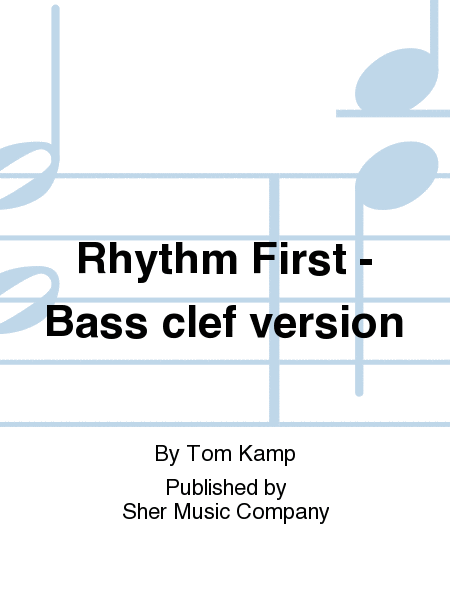Rhythm First! (Bass Clef)
A Beginner's Guide to Jazz Improvisation
-
Ships in 1 to 2 weeks
Details
Description
SKU: SR.205
A Beginner's Guide to Jazz Improvisation. Composed by Tom Kamp. Rhythm First series. Method book (spiral-bound) and digital audio. 104 pages. Sher Music Company #205. Published by Sher Music Company (SR.205).ISBN 9781883217921. 8.5 x 11 inches.
The first book to teach students to start soloing using rhythms instead of scales and chords.
In a step-by-step fashion, Rhythm First! builds up the student's library of rhythmic figures and has them playing along with the accompanying audio to get the sound and feel of jazz soloing under their fingers.
Melodically, the book starts with playing simple rhythmic figures on any note, then on the tonic of the F blues scale, followed by the tonic and one other note. Over the course of the book, it progresses to show how and when to use three kinds of blues scales.
This Rhythm First! method is more fun and therefore more successful in getting kids starting to improvise than any other approach. A must for any school band program!
103 pages, including demonstration/play-along audio!
This book can be successfully used in the following ways:
--As a teaching guidebook for beginning improvisers, even as young as elementary school (9 or 10 years old with about a year of playing experience).
--A player in a middle school, junior high or high school jazz band who has never tried to improvise can get started soloing easily with concrete steps to build solos that sound good.
--If you can already improvise a solo but find all your solos sounding the same, this book will help you listen for more than just the right notes and create solos with rhythmic and melodic interest.
--Rhythm First! can be used by a professional musician or teacher who has had limited jazz playing experience but needs to teach jazz improvisation.
--Classically trained musicians can use this book to teach themselves swing feel, jazz rhythm reading, and improvisation.
--Even an accomplished player looking for fresh ideas can find useful, challenging ideas here to stimulate creativity and add rhythmic vitality to solos.

 Share
Share